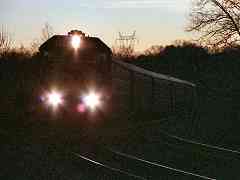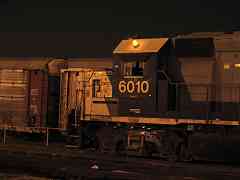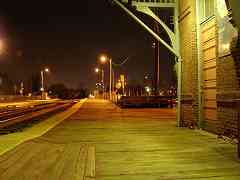|
For this one, I let the camera decide the exposure duration
then waited on the thunder.
It illustrates how far a train can move in 1/10th of a second
-- and this is a freight that's pokey by comparison to Amtrak.
At night, any uncommon light source, such as lightning, can
make a photo more interesting.
I've yet to capture what I'd consider a decent lightning photo, even
one without trains. I've come close to getting hit by lightning,
however, once within 6 feet, another time less than 1 foot. Close
up, the bolts appear as thin as a pencil.
|
























